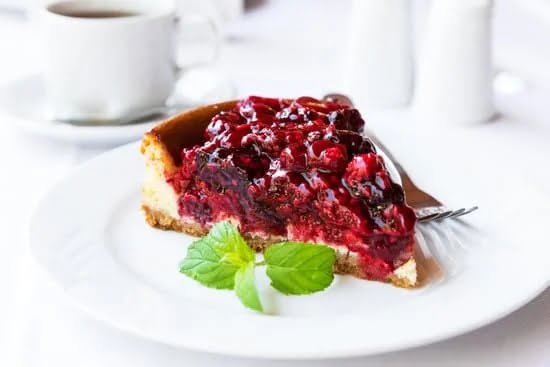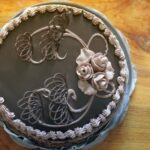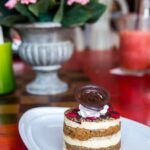Easter is a time of celebration and tradition, and one of the most beloved customs is the baking and decorating of Easter cakes. Whether it’s a simple homemade cake adorned with colorful sprinkles or an elaborate confection, decorative Easter cakes are a symbol of joy and new beginnings. The tradition of making these festive desserts has been passed down through generations, with each culture adding its own unique flair to the celebration.
The history of Easter cakes dates back centuries, with roots in ancient pagan celebrations and Christian observances. As Christianity spread around the world, so did the tradition of baking special cakes to mark the occasion of Easter.
Different cultures have developed their own variations of Easter cakes, each with its own significance and symbolism. From sweet breads studded with dried fruits to rich, buttery cakes filled with spices and nuts, there is a wide variety of traditional Easter cake recipes to explore.
In recent years, there has been a surge in innovative and creative designs for decorative Easter cakes. Bakers and pastry chefs are continuously pushing the boundaries with their intricate decorations and imaginative themes.
From adorable bunny-shaped cakes to stunning floral arrangements made from frosting and fondant, modern Easter cake designs offer something for every style and skill level. Whether you’re an experienced baker or just starting out, there’s no shortage of inspiration for creating show-stopping Easter desserts.
History of Easter Cakes
Easter cakes have been a significant part of celebrating the Easter holiday for centuries. The tradition of baking and decorating these special cakes is deeply rooted in the history and culture of many countries around the world. The history of Easter cakes can be traced back to ancient times, where they were often made as offerings during religious ceremonies and rituals. Over time, the tradition evolved, and different cultures developed their own unique variations of Easter cakes.
Historically, Easter cakes were often associated with religious symbolism and significance. In some cultures, certain ingredients or decorations were used to represent aspects of the Easter story, such as crosses, lambs, or other religious symbols. As Christianity spread to different regions, the tradition of making Easter cakes also spread and adapted to local customs and ingredients.
The history of Easter cakes is rich and diverse, with each culture adding its own flavor and flair to this beloved holiday treat. In Greece, for example, Tsoureki is a sweet bread traditionally baked at Easter time and decorated with dyed eggs. In Russia, Kulich is a tall, cylindrical cake that is often intricately decorated with icing and sugar sprinkles. These examples showcase just a few of the many unique variations of decorative Easter cakes found around the world.
Types of Decorative Easter Cakes
When it comes to celebrating Easter, one of the most beloved traditions is the baking and decorating of Easter cakes. These decorative Easter cakes are not only delicious but also serve as a centerpiece for Easter gatherings, symbolizing the joy and renewal of the season.
Traditional Easter cake varieties vary from region to region, with each culture having its own unique recipes and designs. For example, in Italy, the Colomba di Pasqua (Easter dove) is a popular cake shaped like a dove, while in Greece, a sweet bread called Tsoureki is often braided with dyed red eggs. In Russia and other Slavic countries, a rich brioche-like bread known as Kulich is commonly baked and adorned with icing and candied fruits.
In addition to traditional varieties, modern bakers have been embracing innovative designs and decorations for their Easter cakes. From intricately piped floral patterns to 3D fondant figurines depicting bunnies, chicks, and other Easter symbols, there are endless creative possibilities for decorating Easter cakes.
| Country | Traditional Cake Variety |
|---|---|
| Italy | Colomba di Pasqua (Easter dove) |
| Greece | Tsoureki (sweet bread) |
| Russia/Slavic countries | Kulich (rich brioche-like bread) |
For those who love getting creative in the kitchen, experimenting with different colors, flavors, and designs can result in stunning decorative Easter cakes that will impress family and friends during the holiday festivities. So whether you prefer to stick to tradition or explore new trends, there’s no shortage of inspiration when it comes to decorating Easter cakes.
Ingredients and Baking Tips
When it comes to making decorative Easter cakes, having the right ingredients and knowing the best baking tips are essential for a successful and delicious result. One of the most common ingredients used in Easter cake recipes is flour, which serves as the base for the cake batter.
Other key ingredients include sugar, eggs, butter, and milk. These basic components are often combined with additional flavors and mix-ins such as vanilla extract, citrus zest, chocolate chips, or dried fruit to create a unique and flavorful Easter cake.
In terms of baking tips, it’s important to ensure that your oven is preheated to the correct temperature before placing your Easter cake inside. This will help the cake bake evenly and rise properly.
Additionally, using quality bakeware and lining your pans with parchment paper can help prevent sticking and ensure that your cake releases easily once baked. When it comes to decorating the cake, allowing it to cool completely before applying icing or fondant is crucial to prevent any melting or sliding of decorative elements.
For those looking to experiment with different flavors and textures in their Easter cakes, there are countless variations and recipe options to explore. From classic fruitcakes and rich chocolate cakes to light sponge cakes and fluffy chiffon cakes, the possibilities are endless when it comes to creating a decorative Easter cake that suits your taste preferences. By incorporating fresh fruits, nuts, or spices into your batter, you can add an extra level of complexity and flair to your Easter dessert.
| Ingredients | Baking Tips |
|---|---|
| Flour | Preheat oven before baking |
| Sugar | Use quality bakeware |
| Eggs | Allow cake to cool completely before decorating |
Overall, selecting high-quality ingredients and taking care during the baking process are essential for creating a memorable decorative Easter cake that not only looks stunning but also tastes delicious. Whether you choose a traditional recipe or decide to put a modern spin on your Easter cake creation, experimenting with different flavors, decorations, and techniques can make the holiday celebration even more special. And remember – don’t be afraid to get creative with your designs.
Decorative Techniques
When it comes to decorating Easter cakes, there are various techniques that can be used to create beautiful and festive designs. From traditional piping methods to modern fondant decorations, the possibilities are endless for adding a decorative touch to your Easter dessert.
Piping and Icing
One of the most classic techniques for decorating Easter cakes is using piping and icing. This method allows for intricate designs to be created on the surface of the cake, such as delicate flowers, intricate patterns, or written messages. Using different piping tips can also create varying textures and shapes, adding depth and visual interest to the cake.
Fondant Decorations
Fondant has become increasingly popular in cake decorating due to its versatility and smooth finish. This technique involves rolling out a thin layer of fondant and then cutting it into various shapes or using molds to create detailed decorations. From colorful eggs to adorable bunnies, fondant allows for endless creativity in designing decorative elements for Easter cakes.
Edible Accents
In addition to icing and fondant, there are a plethora of edible accents that can be used to adorn Easter cakes. From vibrant sugar flowers to shimmering edible pearls, these accents add dimension and glamour to the overall design of the cake. Edible glitter, gold leaf, and even edible images can also be incorporated into the decoration for a truly unique and eye-catching result.
By utilizing these decorative techniques, you can elevate your Easter cakes from simple desserts to stunning centerpieces that will delight your family and guests. Whether you prefer traditional designs or want to experiment with more modern approaches, there is no shortage of creative possibilities when it comes to decorating your Easter cake with flair.
Easter Cake Designs
Easter cakes are an essential part of the celebration of Easter, symbolizing new life and the end of Lenten fasting. One of the most beloved traditions during this time is decorating Easter cakes, which adds a festive touch to the holiday. The decorative easter cakes are not only visually appealing but also a delicious treat that can be enjoyed by family and friends during Easter gatherings.
There is a rich history behind the tradition of decorating Easter cakes, dating back to ancient times when early Christians would mark the end of Lent with a special cake. Over the years, different cultures have developed their own unique variations of Easter cakes, each with its own decorative elements and flavors. Today, people from all around the world continue to carry on this tradition by creating beautiful and intricate designs on their Easter cakes.
When it comes to decorative easter cakes, there is a wide variety of options available, ranging from traditional recipes passed down through generations to modern and innovative designs. From classic simnel cake with marzipan decorations to whimsical bunny-shaped cakes adorned with colorful icing and sprinkles, there is something for everyone’s taste and style. Whether you prefer a simple and understated design or an elaborate showstopper, there are endless possibilities for creating stunning Easter cake decorations.
- Examples:
- Classic Simnel Cake
- Bunny-Shaped Cake
- Floral-themed Cake
DIY Easter Cake Projects
Planning to make Easter extra special this year? Look no further than DIY Easter cake projects that are not only fun to create but also delicious to enjoy. Get ready to roll up your sleeves and let your creative juices flow as you embark on a delightful journey of making decorative Easter cakes with your loved ones.
Fun and Easy DIY Projects
Gather the whole family for a day of Easter cake decorating fun. From simple buttercream frosting techniques to crafting edible decorations, there are endless possibilities for creating personalized Easter cakes. With a little bit of imagination and a lot of love, you can turn a plain cake into a work of art that will be the centerpiece of your Easter celebration.
Creative Ideas for Festive Cakes
Looking for inspiration to make your DIY Easter cake stand out? Consider incorporating traditional symbols like bunnies, eggs, and flowers into your designs. Experiment with vibrant spring colors and playful patterns to capture the joyous spirit of the season. Whether you opt for a classic look or go all out with whimsical decorations, let your creativity shine through in every detail of your homemade Easter cake.
Memorable Family Bonding
Aside from being a delightful way to indulge in sweet treats, DIY Easter cake projects provide an opportunity for families and friends to bond over shared creativity and joy. As you work together in the kitchen, you’ll create lasting memories while savoring the anticipation of enjoying the fruits of your labor. So, gather everyone around and get ready to have a blast bringing decorative Easter cakes to life.
Serving and Presentation
When it comes to serving and presenting decorative Easter cakes, there are several creative ways to showcase these delicious treats during the Easter celebration. One popular option is to use a tiered cake stand or platter to display the cakes, allowing for a visually appealing arrangement that adds height and elegance to the table. Additionally, consider adding fresh flowers, colorful ribbons, or themed Easter decorations around the base of the cake stand to further enhance the presentation.
Another idea for serving decorative Easter cakes is to create a dessert table or display area dedicated solely to showcasing these festive treats. This could include incorporating other Easter-themed desserts and treats, such as cupcakes, cookies, and pastries, all arranged in a visually stunning and coordinated manner. Using decorative trays, stands, and cake pedestals can help create an eye-catching display that will impress your guests.
In terms of presenting decorative Easter cakes on individual plates or serving slices to guests, consider adding a final artistic touch with a dusting of powdered sugar or cocoa powder, along with a garnish of fresh berries or edible flowers. These small details can elevate the overall presentation of the cake slices and make them even more visually appealing. Remember that presentation plays an important role in enhancing the overall experience of enjoying decorative Easter cakes during this special holiday.
Ultimately, how you choose to serve and present your decorative Easter cakes is entirely up to you. Whether you opt for a grand centerpiece display or prefer individual servings with personalized accents, the key is to ensure that your presentation reflects the same level of care and attention that went into creating these beautiful and delicious Easter treats.
Conclusion
In conclusion, decorative Easter cakes hold a special place in the celebration of Easter, symbolizing new life and the joy of the season. The tradition of decorating Easter cakes has been a part of different cultures around the world for centuries, with each region putting its own unique spin on this delicious and meaningful treat. From traditional varieties to modern and innovative designs, there is a wide range of options for creating beautiful and festive Easter cakes.
As we’ve explored the history, types, ingredients, baking tips, decorative techniques, designs, DIY projects, and serving suggestions for Easter cakes, it’s evident that there are endless possibilities when it comes to creating these delightful confections. Whether you prefer a simple and classic design or an elaborate masterpiece, there is something for everyone to enjoy when it comes to decorative Easter cakes.
This Easter season, I encourage you to embark on your own Easter cake project. Whether you’re a novice baker or an experienced one, creating a beautifully decorated cake can be a fun and rewarding experience. So gather your family or friends and get creative in the kitchen as you celebrate this special holiday with delicious and decorative Easter cakes that will surely impress everyone at your gathering.
Frequently Asked Questions
What Cake Is Traditionally Eaten at Easter?
Traditionally, a popular cake eaten at Easter is the “Easter lamb cake.” This cake is often shaped like a lamb and decorated with white frosting to symbolize purity and new life.
How to Decorate a Cake for Easter?
When decorating a cake for Easter, you can use pastel colors such as pink, yellow, and green to create a springtime theme. Adding edible flowers, mini chocolate eggs, or even a bunny-shaped topper can also make your cake festive and fun.
What Is an Easter Cake Called?
An Easter cake is often called a “Simnel cake.” This fruitcake is typically topped with marzipan and 11 marzipan balls to represent Jesus’ disciples (excluding Judas). The Simnel cake is a delicious and meaningful tradition during the holiday season.

Welcome to our cake decorating blog! My name is Destiny Flores, and I am the proud owner of a cake decorating business named Cake Karma. Our mission is to provide delicious, beautiful cakes for all occasions. We specialize in creating custom cakes that are tailored specifically to each customer’s individual needs and tastes.





